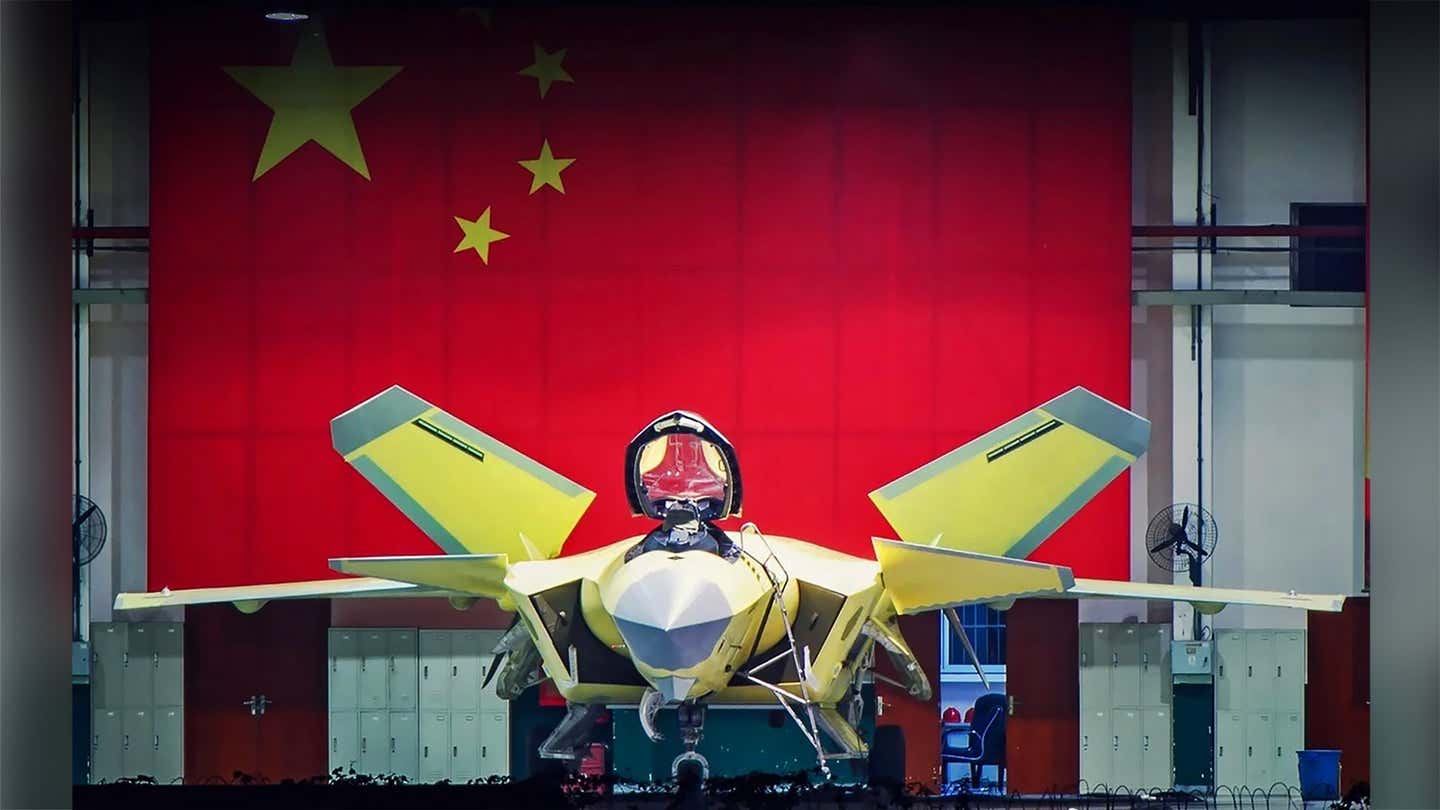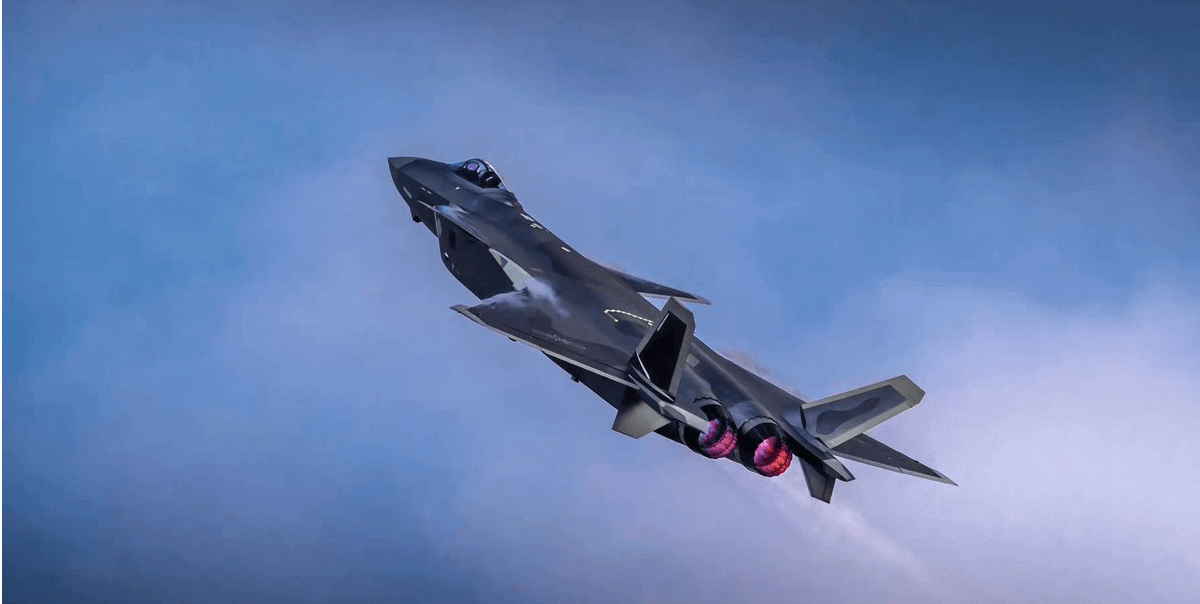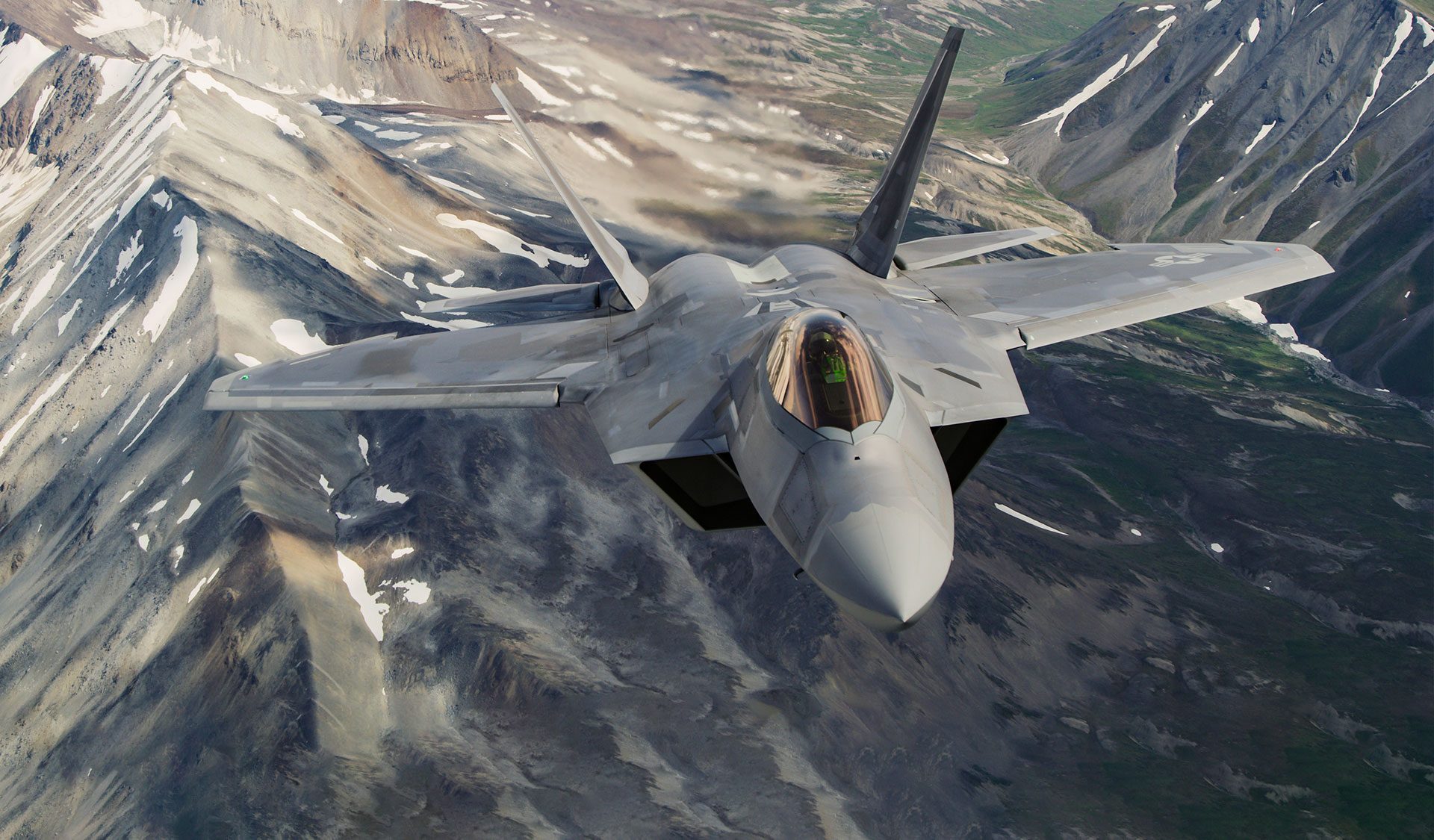China has often been accused of espionage and stealing American military technology, especially that of the F-22 Raptor, considered the most potent air-superiority fighter in the world.
US Navy’s ‘Most Powerful’ Warship Transgresses Into ‘Chinese Waters’ Days After Nuke Sub Makes Rare Visit To Guam
While Beijing refutes all such claims, it has been certainly making efforts to match the capability of the fifth-generation American stealth jets, F-35 Lightning II and F-22 Raptor even as geopolitical tensions heat up in the Asia-Pacific region.
It has now emerged that China will begin upgrading the engines of its most advanced stealth fighter jet, the J-20, this year in order to bring its performance closer to that of the American F-22 Raptor.
It is believed that J-20’s performance has been limited due to the use of the WS-10C engine, a stop-gap arrangement. The WS-10C is an advanced variant of the basic WS-10 engine which is used on other fighters in the PLA Air Force inventory.
Finally a first clearer image of the J-20 engine testbed – as it seems an older 201x prototype – was posted. Even if still not clear of a TVC-variant of the WS-10C or already the rumoured WS-15, it anyway clearly reveals for the first time the nozzles.
(Image via @shawnhwang_) pic.twitter.com/D27xyWTT75
— @Rupprecht_A (@RupprechtDeino) January 18, 2022
These WS-1OC engines have new thrust-vectoring nozzles, a technology that the Chinese engineers had been working on for two decades. This was first demonstrated at the 2018 Zhuhai air show. In the long run, the J-20 fighter jets are to be integrated with the WS-15 engines to match the Raptors.
A few days ago, a speculative report had emerged that the J-20 was flying with the WS-15 engine to test its capability. The assessment was apparently based on some leaked photos. The report had suggested that the J-20 was flying with a WS-15 and WS-10 engine. However, it could not be independently verified.
Rafale, F-15EX, BrahMos – Indonesia Looks To Withstand Chinese Military Aggression With Support Of Indo-Pacific Democracies
The WS-15 had been in the works for a while now, with the objective to power the J-20 as well as the J-31 (FC-31) fifth-generation stealth aircraft but a series of failed tests and evaluations have led to its deferment. This is the reason why China chose to integrate the WS-10C engines and is now upgrading the same.

The J-20 Engine Upgrade
A 2021 Pentagon report on the Chinese PLA submitted to the US Congress had stated that Beijing was carrying out upgrades to its J-20 fighter jets.
The report had then revealed that with the installation of indigenous WS-15 engines, the Chinese are adding a thrust-vectoring nozzle and an F-22-like “supercruise” capability. The thrust-vector technology allows the Raptor to alter the direction of engine thrust, allowing it to do abrupt maneuvers that previous generations of aircraft couldn’t.
J-20 in a turn, with afterburner on pic.twitter.com/Tth2JMyzVc
— 彩云香江 (@louischeung_hk) January 17, 2022
Chinese engineers have been working on the WS-15 high-thrust engine to allow their most sophisticated fighter to reduce the gap on US warplanes. As of now, all WS-10C engines attached to J-20s will be given thrust vectoring capabilities this year, the latest report suggests
“Because verification of the two-dimensional thrust-vectoring nozzles, the technology used by the F-22, has been completed, the maneuverability and stealth capability of the J-20s will be upgraded,” a person familiar with the engine development program, told SCMP.
Booster Shot For Russia! Will UAE Co-Develop SU-75 Checkmate With Moscow After Suspending US F-35 Fighter Deal?
“The upgrading project aims at meeting the PLA’s intensive training demands, as the country plans to deploy about 200 J-20s.”
State broadcaster China Central Television aired footage this week of PLAAF J-20 aircraft conducting night-time combat training. Additional clips revealed the planes were equipped with WS-10C engines.

Macau-based military observer Antony Wong Tong said: “It’s the first time the PLA showed simulated dogfight drills between different J-20 brigades, which is supposed to be regular training for PLA fighter jet pilots.
According to the source quoted by SCMP, testing on the WS-15 engine is currently underway and will be completed next year. “The J-20 engines will be replaced by the WS-15 once the checks are completed,” the source said, adding there would be no technical problems because the existing Russian and Chinese engines were of similar size and shape.
Further, the state media has reported that the modern warplane has proven its operability in adverse circumstances, including high altitude, harsh cold weather, and high humidity and temperatures, since China’s J-20 stealth fighter jet switched to locally built engines.
This indicates that the current engines being upgraded with the vector technology is a prelude to the indigenous engine that will ultimately power the Chinese Mighty Dragons to match the American Raptors.
Can J-20 Match F-22 Raptor?
The American F-22 Raptors have super-cruise capability enabled by the thrust vector technology that the Chinese are imbibing, through upgrades and through a planned installation of the indigenous WS-15 engine.
The F-22 Raptors’ ability to achieve and maintain Mach speed without using an afterburner is referred to as ‘supercruise’. This is possible owing to the engine’s power and thrust. As a result, the jet can fly longer and carry out more detailed assault missions without having to refuel as frequently as a conventional fighter jet.

A super cruise-enabled J-20 would be able to stay in high-speed battles for significantly extended periods of time without having to leave the combat and return for refueling, similar to an F-22 Raptor.
However, since Lockheed Martin and the US Air Force have changed the software of the F-22 Raptors in recent years, upgrading J-20 stealth fighter jets to compete with them will be a challenging task for China, according to National Interest.
In the end, these improvements might not be enough to make the J-20 stealth fighter plane really competitive with the F-22 Raptor unless the weapons range and guidance systems can match or outperform it.
Russia Deploys ‘Tactical Nuclear Missiles’ Near Ukrainian Border; Kiev Says Iskander-M Can Destroy Critical Military Infra
Additionally, there is considerable skepticism regarding the upgraded J-20 engine matching the power of the Raptors, let alone rival them.
“The thrust of the J-20 will still lag behind the US F-22 until China delivers the WS-15 engines for the aircraft”, Antony Wong Tong told SCMP.
So, the current upgrade to the J-20 engine with cutting-edge thrust vector technology is in a way, a breakthrough for the J-20s. However, they might need more technological upgrades to be able to rival the most lethal and air-superiority fighter aircraft in the world.
- Contact the author at sakshi.tiwari9555@gmail.com
- Follow EurAsian Times on Google News




